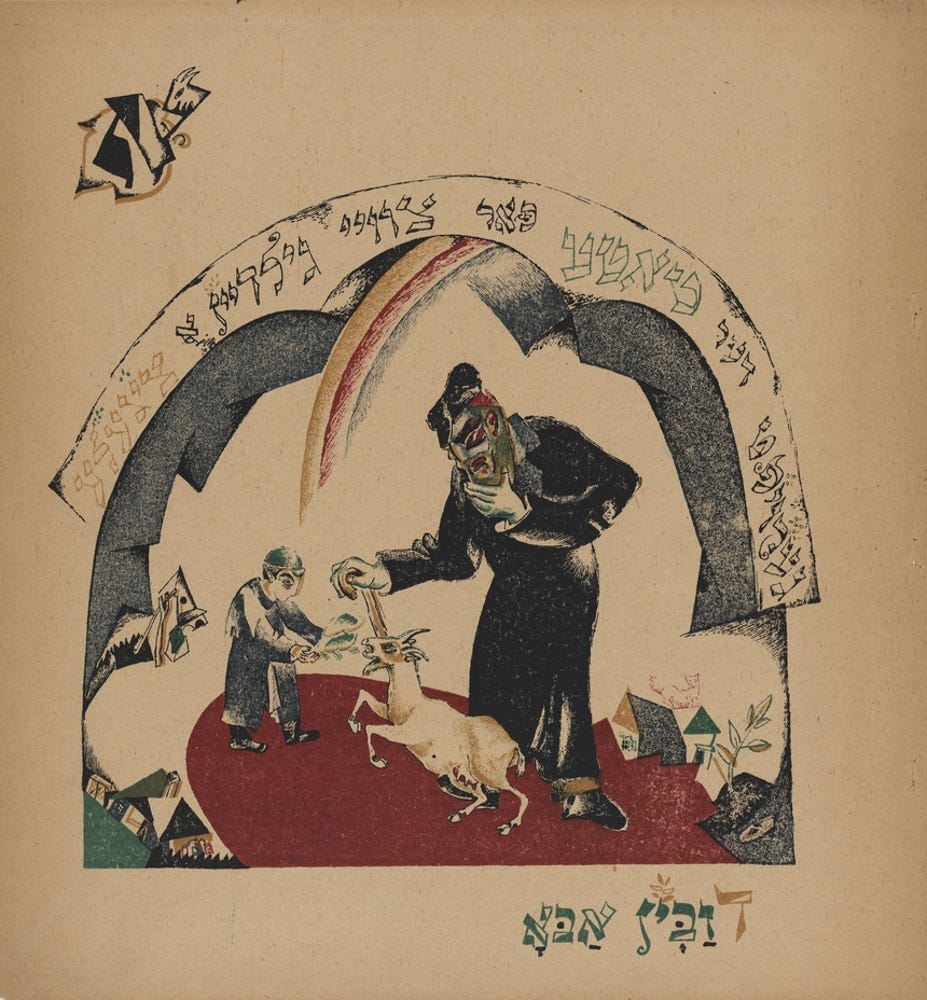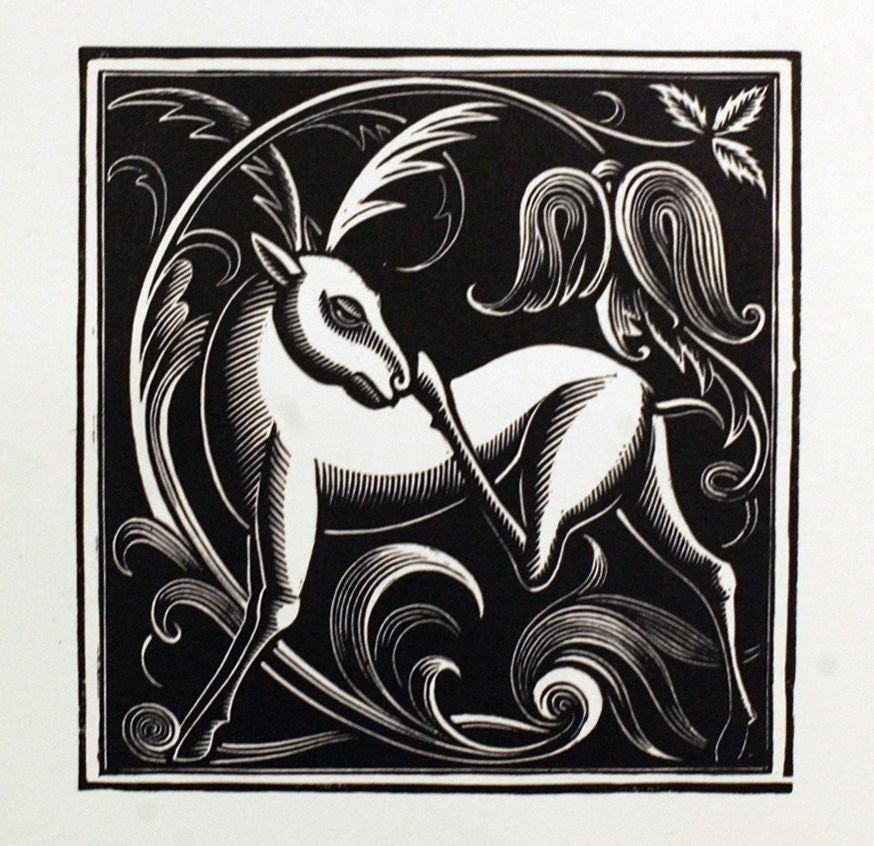✨This month’s #ChaiSociety Dispatch comes on the eve of Shavuot, the culmination of the spiritual Exodus begun at the Seder. It offers us a chance to look back at the wonderful events of the past weeks before preparing for an exciting summer ahead.
Coming from the success of our Purim party which ran back to back with SXSW, where we celebrated #openShabbat with some 300 people, Tech Tribe jumped immediately into our prep for Passover.
In addition to guests for the Seders, we brought matzah to some 30 people at tech and digital media hubs across the city. Among them: The offices of Amazon, JustWorks and Notion!
💡 Think:
Central to the campaign is the design of our Matzah boxes. Beautifully designed and with deep intentionality, the guide, created for Tech Tribe in collaberation with Yossi Kanner Design, is evocative of El Lissitzky’s art.
Born Eliezar Lissitzky in Pochinok, a shtetl some 30 miles southeast of Smolensk, and raised in Vitebsk, Lissitzky was seemingly caught between two worlds: His father Mordechai, a proponent of the haskalah, the so called Jewish Enlightenment movement, read Heine and Shakespeare in the original and imparted a love for art in his children. His mother, a traditional and religious Jew, kept the family in Russia at the behest of the local rabbi, and inculcated her children with a Jewish education.

Lissitzky is known primarily for two phases in his art:
Between 1918 and 1923, he illustrated more than 30 children’s books in Hebrew and Yiddish.
From 1919 until Stalin’s crackdown on art in the 1930s, he also helped pioneer and popularize Suprematism, abstract art based upon "the supremacy of pure artistic feeling" rather than on visual depiction of objects, that influenced the Russian avant-garde and Bauhaus movements. Often these two creative spheres in Lissitzky’s life are seen as distinct, if overlapping phases.
Of Chad Gadya, Lissitzky’s most famous Jewish work, Boris Aronson1 would write: “Lissitzky edited Had Gadya as a stylized lubok, in which folk spontaneity was transformed into Jewish stylistic beauty.[…] His highly deliberated illustrations fit their texts perfectly. He was the first to reveal a cultural understanding of the graphical tasks and formal elements of Jewish folk art. His use of stylistic folk elements was always skillful and intelligent.”2
Like other Jewish contemporaries, Lissitzky was inspired by the ancient synagogue in Mogilev, the so called “Cold Shul.”
Describing his trip, Lissitzky mused “And so we, having only just taken a pencil and a brush in hand, began quickly to anatomize not only nature around us, but also ourselves. Just who are we? What place do we hold among the nations? And what is our culture as such? And how exactly should our art be? …
Seeking around for ourselves, for the face of our time, we tried looking into the old mirrors, in order to ground ourselves in the so-called “folkways.” In the beginning of this era, almost all peoples had taken this path.”3
The trip then, grounded these Jewish artists in their Judaism, even as the sought to understand it beyond the pale of the religion of their youth.
From there the general consensus is that Lissitzky moved away from Jewish themes, embracing the broader Suprematism movement. Yet some scholars have argued that Lissitzky’s later work continued to be very heavily influenced by Jewish motifs and traditions.
The enigmatic Red Wedge in “Beat the Whites with the Red Wedge,” arguably his most famous work, has been read as a subversion of the Antisemitic pogrom slogan "Beat the Jews!" (Бей жидов!). It has also been cast as a rendition of the Kabbalistic kav the first piercing of divine light after the Infinite has made room for the finite.
Others have tried to read into the enigmatic design of the Shifs Karta, “The Ships Ticket” an illustrartion for “Six Stories with Easy Endings” by Ilya Ehrenburg. The image, includes the Hebrew letters פ"נ - pei nun - short for poh nikbar, here is buried as well as details scrounged from Maimonides’ schematic of the Temple mount4.
In truth one must wonder how much Lissitzky, who at best had a cheder (elementary school) Jewish education, knew about the Jewish ideas ascribed to him.
Yet what is clear is that he imbibed the latent artistic energy of the Chasidic heartlands. Embedded within Suprematism is the desire to breakdown the dross physicality to the its simply, internal components. Not ones that addressed the form, the externality of the object, but its core.
Yet, in the backwaters of Mogilev in Belarus, Lissitzky, along with his colleagues, they surely made a profound discovery.
As Aronson and Issachar Ber Ryback,wrote: “The essence of abstract painting consists in how rather than what. Thanks to this, many contemporary Jewish artists do reveal their racial origins [in their work], even if they do not wish to stress their ethnicity. However much the artist may strive to be international in his work, if his artistic sensations are expressed in abstract form he will nonetheless be ethnic [rather than international]. For the spiritual essence of the artist always grows out of impressions imbibed within his own milieu.”5
🏃 DO:
🧀 Shavuot With Tech Tribe! Join us Friday, May 26th for an al fresco feast, drinks and the Ten Commandments, as we celebrate Shavuot!
📜 Jewglers, join us TODAY Wednesday, May 24th for Scribe: Exploring the Art of Analog Writing a pre-Shavuot at Google NYC.
👻 What does the Torah have to say about self-driving cars? What happens when AI needs to react? Snapchat, join us for our next lunch and learn 1pm, Wednesday, June 7th.
🤖 Will The Robots Rob Me? Find out at next week’s #FirstFriday Society, Friday, June 9th!
📸 Pic:
Chai Society is an exclusive email, sent throughout the year by Tech Tribe just for you!
Like what you saw? Want more? Please feel free to forward this email far and wide!
Support Tech Tribe in our mission to empower Jews in Tech and Digital Media to explore their Jewish identities.
Follow us on Social: Twitter | Facebook | Instagram
Find out if your company does employee matching! We’re now listed on Benevity and Bright Funds!
Tech Tribe is an affiliate of Chabad Young Professionals
Tax ID 82-2619676
Boris or Boruch Ber Aronson was the son of a Chabad chasid, Rabbi Shlomo Ahron Ahronson, the first chief rabbi of Tel Aviv, and before that the chief rabbi of Kiev. Boris designed scenes, costumes, and lighting for thirty-four plays and three musicals on Broadway including the original 1953 production of The Crucible, The Diary of Anne Frank and Fiddler on the Roof.
B. Aronson, Sovremennaya yevreiskaya grafika, 72–76 as rendered in Alexander Kantsedikas, El Lissitzky: The Jewish Period
Text from On the Mogilev Shul: Recollections, translation by Madeleine Cohen
This claim originates from Alan Bernholz, but in the writings of Dr. Chimen Abramsky, the son of Rabbi Yechezkel Abramsky, and someone well versed in classic Torah texts “The American art historian, Alan Birnholz[,] completely misunderstood this, thinking that it was a Kabbalistic text: obviously not knowing Hebrew, he invented an unfounded theory of the influence of Kabbalah on Lissitzky.”
B. Ryback and B. Aronson, “Di vegn fun der yidisher moleray,” Oyfgang 1 (1919) as rendered in El Lissitzky: The Jewish Period












